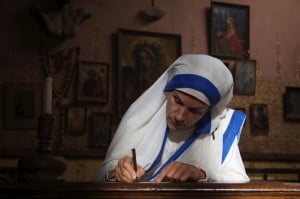 Leonardo da Vinci was the quintessential “Renaissance man”—skilled in mathematics, music, science, anatomy, geology, cartography, botany, architecture and writing.
Leonardo da Vinci was the quintessential “Renaissance man”—skilled in mathematics, music, science, anatomy, geology, cartography, botany, architecture and writing.
- An engineer by trade, he developed rudimentary plans for the helicopter, military tank, solar power, and the calculator; but none of these were developed in his lifetime.
- He conceptualized the theory of plate tectonics; but science had not advanced to the stage where this information could be utilized or even tested.
- He made important discoveries in anatomy, civil engineering, optics, and hydrodynamics, but he did not publish his findings and they had no direct influence on later science.
- He is one of the greatest painters who ever lived; but he was a procrastinator who was constantly experimenting with new techniques; so in his lifetime, he painted only 18 works—and finished none of them. Of those, his best known works are The Last Supper and Mona Lisa.
And this week, Musée du Louvre in Paris has opened an exhibition showcasing his ultimate masterpiece, a painting of St. Anne with the Virgin Mary and the Child Jesus.
The painting, titled The Virgin and Child with Saint Anne, was first mentioned in the correspondence of Isabella d’Este, Marchesa of Mantua and one of the leading women of the Italian Renaissance. Da Vinci worked painstakingly on this creation for 20 years, and it was still unfinished at the time of his death in 1519.
Restoration was attempted seventeen years ago, but was abandoned when curators feared that the restoration technique was damaging to the sfumato, a painting technique that Leonardo had mastered. Da Vinci himself described sfumato as “without lines or borders, in the manner of smoke or beyond the focus plane.”
Now, The Louvre has brought together 130 compositional sketches, mathematical diagrams, landscape studies and preparatory drawings by the master himself and by his apprentices. The exhibit showcases the gradual development of Da Vinci’s art, with his “St. Anne trinity” moving away from the customary compositional approach of the time, with figures aligned vertically. Also included in the exhibit are earlier works by the artist, such as the Virgin and Child with Cat (from the British Museum in London) and the Virgin of the Rocks (property of the Musée du Louvre, Paris). The St. Anne painting itself, after an 18-month-long restoration, glows with vivid browns and translucent lapis lazuli blues.
The painting has hung in the Salon Carré in The Louvre since the mid-nineteenth century; and it has strongly influenced the work of other artists such as Delacroix, Manet and Carpeaux. The work was studied by psychotherapist Sigmund Freud, who was especially interested in the shape of a vulture hidden in the folds of the Virgin’s garment.










